- Shop Now
- Burncoose Specialities
- This Month
- Offers & Promotions
- RHS Chelsea Flower Show 2024
- 40 years at Burncoose
- Engage With Us
- Information, Help & Advice
- About Us & Our Services
- Terms & Conditions
- Log In / Register
BUDDLEJA
Commonly known as Buddliea, Butterfly bush
The Buddleja, Buddleia or Buddlea, named after English rector Rev. Adam Buddle is pronounced without the "j".
Genus of about 100 species of evergreen, semi-evergreen and deciduous shrubs, sometimes trees and climbers and a few herbaceous perennials.
They originate from riversides, rocky areas and scrub in Asia, Africa and North and South America.
Staples of the modern butterfly garden they are also attractive to moths and bees. Breeding is resulting in more compact cultivars of davidii with sterile seed, an important attribute because of its invasiveness.
-
Deciduousmid-green leaves to 25cm (10in) long, reddish-hairy underneath
-
 CreamWith orange-yellow throat
CreamWith orange-yellow throat -
Tall Shrub
-
 Hardy - average winterHardy through most of the UK apart from inland valleys, at altitude and central/northerly locations. May suffer foliage damage and stem dieback in harsh winters in cold gardens. Plant can withstand temperatures down to -10°C (14°F)Borderline
Hardy - average winterHardy through most of the UK apart from inland valleys, at altitude and central/northerly locations. May suffer foliage damage and stem dieback in harsh winters in cold gardens. Plant can withstand temperatures down to -10°C (14°F)Borderline -
Against a wall
-
 Full sunShelter from cold, dry winds
Full sunShelter from cold, dry winds
-
Additional Features
 Good to knowWildlife plant - bees, butterflies and other insects. Named for George Forrest who introduced it to western cultivation, 1904
Good to knowWildlife plant - bees, butterflies and other insects. Named for George Forrest who introduced it to western cultivation, 1904 Pests & DiseasesCapsid bugs, caterpillars, figwort weevil, mullein moth, red spider mites
Pests & DiseasesCapsid bugs, caterpillars, figwort weevil, mullein moth, red spider mites Place of originIndia to western China
Place of originIndia to western China -
Flower ShapePaniclesTerminal panicles to 25cm (10in) long
-
Garden Location/ConditionsBorderSuits a mixed or shrub border
-
HardinessFully hardy
-
Leaf margin
 Serrulate
Serrulate(see photos above) -
Leaf shape
 Elliptic
Elliptic(see photos above) -
Pruning group
 Pruning group 4Suitable for: Deciduous trees and shrubs that flower on current year's growth or are grown for winter stem effect.
Pruning group 4Suitable for: Deciduous trees and shrubs that flower on current year's growth or are grown for winter stem effect.
Pruning: Hard prune to a low permanent framework.
When: Annually in early Spring.
-
Seasonal InterestAutumn
-
Soil ConditionsFertile well drained soil
-
Wildlife
 Bee friendlyButterfly friendlyRabbit Resistant
Bee friendlyButterfly friendlyRabbit Resistant
Buy Varieties of BUDDLEJA

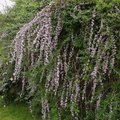
BUDDLEJA alternifolia
mauvish-purple flowers along stems
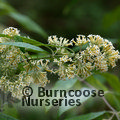
BUDDLEJA auriculata
heavily scented creamy-white flowers
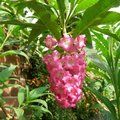
BUDDLEJA colvilei
our choice as the most attractive and unusual variety of buddleja. Large panicles of dark red flowers at the ends of each stem in early summer

BUDDLEJA crispa
white felted leaves and fragrant lilac flowers with an orange throat
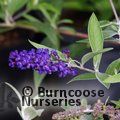
BUDDLEJA davidii 'Adonis Blue'
compact growing form with unique blue-mauve flowers

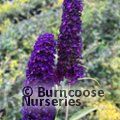
BUDDLEJA davidii 'Black Knight'
deepest purple
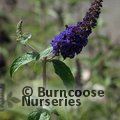
BUDDLEJA davidii 'Empire Blue'
nearest to true blue of any variety

BUDDLEJA davidii 'Harlequin'
variegated form of Royal Red
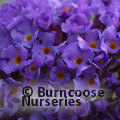
BUDDLEJA davidii 'Nanho Blue'
dwarfish habit, flowers pale mauve-blue

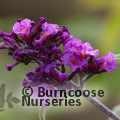
BUDDLEJA davidii 'Nanho Purple'
dwarfish habit, flowers violet-purple with orange centres

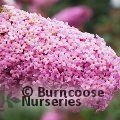
BUDDLEJA davidii 'Pink Delight'
huge pure pink

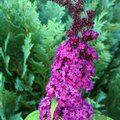
BUDDLEJA davidii 'Royal Red'
brightest purplish-red
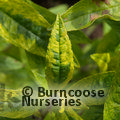
BUDDLEJA davidii 'Santana'
lance-shaped yellow variegated leaves and claret-red flowers

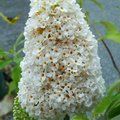
BUDDLEJA davidii 'White Profusion'
large pure white
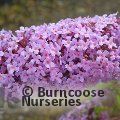
BUDDLEJA davidii 'Wisteria Lane'
fragrant, pendent, lilac-purple flowers on arching stems. Compact and floriferous
Useful extras...









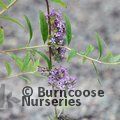


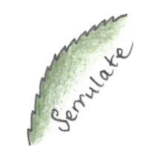
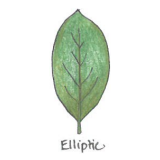
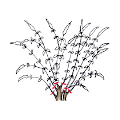




 Gift-wrapping available
Gift-wrapping available




